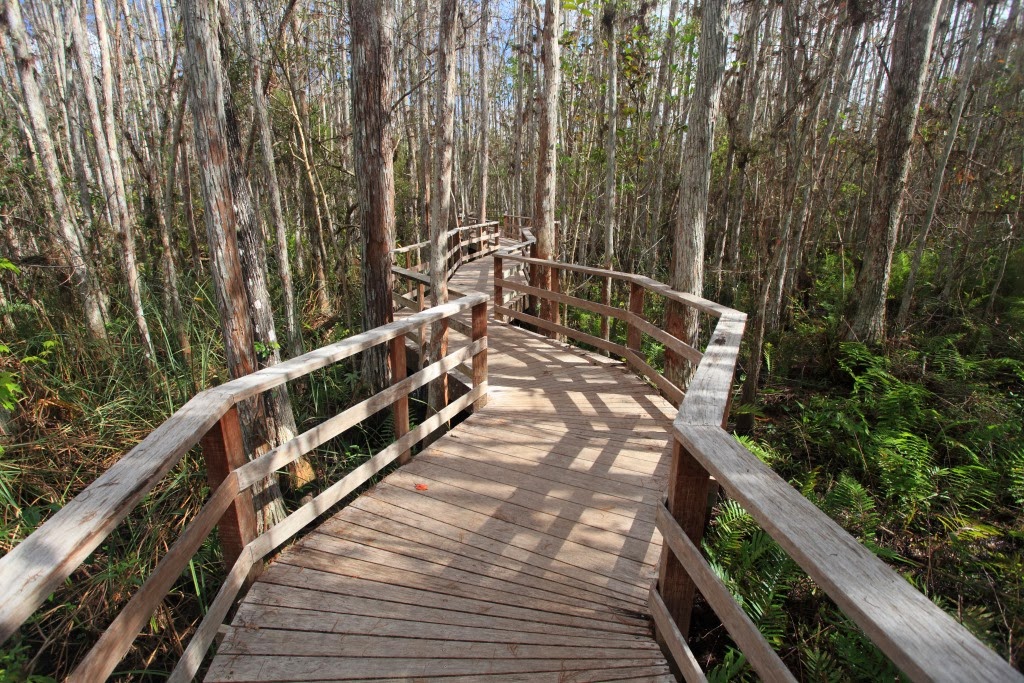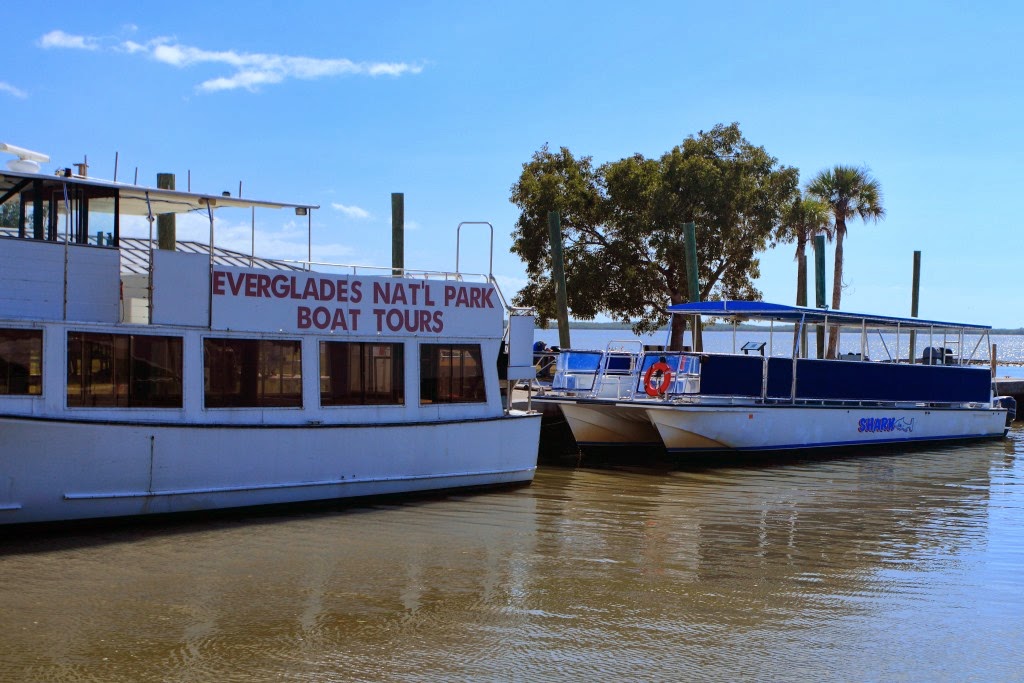February 4
It was a warm sunny Florida morning with a few clouds floating about as we drove to Corkscrew Swamp. This site is owned and operated by the Audubon society so you know it will be great for birds. The Blair Audubon visitor centre is located in a beautiful pine forest on the edge of the largest old growth stand of Bald Cypress in North America.
Pine Savannah by the Audubon Visitor Centre
There were a couple of well maintained bird feeders near the centre and several bird species were in attendance. This included one of the most beautiful birds on earth, the Painted Bunting.
94) *Painted Bunting
Other birds visiting the feeders included Common Ground Doves, Morning Doves, Common Grackles, Brown-headed Cowbirds, Red-bellied Woodpeckers and Northern Cardinals. This was a perfect location to use our 600 mm Canon lens.
100) Common Ground Dove
On the forest floor, the Common Ground Dove looks like a cross between a Morning Dove's back and the speckled front of an Inca Dove.
Morning Dove
There was an extensive boardwalk into the waterlogged Bald Cypress Forest. Ground elevation has a major effect on the water level and the corresponding ecosystem. From the pine forest to the Bald Cypress Forest is a drop of 8 inches in elevation but that is enough to dramatically change the flora. After a 4 inch drop in elevation, the pine forest gives way to an open wet meadow devoid of trees. Another 4 inch drop in elevation and you enter the waterlogged Bald Cypress forest. It is quite a dramatic change in plant life and bird habitat.
Boardwalk through the wet meadow to the Bald Cypress Forest
As we entered the Bald Cypress Forest and we realized we were not the only ones using the boardwalk
8] Raccoon family out for a stroll.
The forest was fairly sunny as Bald Cypress trees are one of the few conifers that lose their leaves in winter. Some of the cypress tree in this forest were huge and over 800 years old. This is rare to see these days as most Cypress Forests were logged years ago.
The base of many trees were covered by vines.
Birds in the outer sections of the forest included: Red-bellied Woodpeckers, Yellow- bellied Sapsuckers, Catbirds and Red-shouldered Hawks.
The Corkscrew Swamp site is ideal for wading birds and was very popular with plume hunters in the late 19th century. It was the fashion back then for women to wear the flight feathers from Great and Snowy Egrets. These birds were butchered by the hundreds of thousands for their flight feathers so that women would look fashionable in their feathered hats. Snowy and Great Egrets were close to extinction when activists shared with the general population what the feathered hats really signified.
Plumed hats went out of fashion and the egrets came back from the brink of extinction.
101) Black-crowned Night Heron - Juvenile
The wettest sections of the forest were ideal for alligators and wading birds.
American Alligators
Little Blue Heron
After a full day at Corkscrew Swamp we drove to the nearby Seminole reservation and spent two nights in the large casino parking lot.
February 5
We had a quiet day camped in the casino parking lot. They had free electrical hook-ups so you could park and gamble. Neither one of us is big on gambling but we did enjoy the soft rock music in the casino lounge and Emma got a fair bit of work done on some Red Fox projects. We did see our first 102) Loggerhead Shrike and 103) Crested Caracara of this trip.
Loggerhead Shrike
February 6, Thursday
I awoke at 5:00 a.m. and had the RV rolling down the road toward the Everglades by 7:00 a.m.
Emma was sleeping in the back as we cruised through the early morning mist. It seems to be fairly frequent that the Florida mornings start cool, cloudy and foggy, then by late morning, the fog dissipates, the clouds slowly vanish and are replaced by a hot sunny afternoon.
We stopped at the Fakahatchee Reserve and I did a little birding in the mist while Emma caught up on her sleep. I saw a 104) Black and White Warbler and a 105) Common Yellowthroat.
By late morning we arrived at Everglade City. It was now a bright sunny morning as Emma rose and shone.
The Gulf Coast at Everglades City
We quickly booked two boat cruises.The first cruise took us into the channels of the massive mangrove forests of Everglades National Park.
The mangrove boat tour was fun and informative as our small boat wandered up some of the many small waterways through the forest of mangrove trees. In our channel, the Snowy and Tricoloured Egrets were in abundance and flew ahead of us down the enclosed channels as we approached them.
There were also many other tour boats chasing the egrets about. I was a little concerned that we were overly disturbing the birds with these constant tour boats. It was a conundrum. You are more likely to protect and advocate for what you have seen and experienced. However, the volume of traffic in a shrinking habitat also becomes part of the problem.
Still it is a beautiful sight to see hundreds of Snowy Egrets flying down a mangrove swamp channel. I hope our children's children get to see it.
The exposed branching roots of the Red Mangrove Trees were covered with herons at low tide.
Snowy Egret
Few trees other than mangroves have evolved to live in this salty, intertidal, flood plain. The Red Mangrove trees were particularly fascinating with their exposed spreading root system. The White and Black Mangrove trees were also interesting but they lack the dramatic spreading root system of the Red Mangrove trees.
Red Mangrove Tree - trunk/root system
Fast alligator with a slow bird.
Osprey
White Ibis
Great Blue Heron
Double-crested Cormorant
Tricoloured Heron
Snowy Egret
American Alligators seem so slow and lazy when they are basking. However, once they are warmed up, in the water and good to go, be careful.
Roseate Spoonbill
Head or tail? You make the call.
Osprey - male
Ospreys
It was late in the breeding season for Ospreys to start a nest. However, this male was doing his best to build a nice enough nest to meet the standards of his skittish new partner.
Our second boat cruise was in the mid afternoon and this trip took us out through the mangrove islands into the Gulf of Mexico.
National Parks Boat Cruise into the 10,000 Islands
This Caspian Tern bid us farewell as we headed away from the dock.
Mangrove Island
This area is referred to as the Ten Thousand Islands. If there is a submerged rock with even one mangrove tree growing on it then it qualifies as an island. Determining the exact number of islands is also dependent on the tide level so ten thousand islands is only an estimate.
Emma loves to see mammals so the dolphins around our boat made her day.
Once we got back to dry land we went to our campground. It was still early when we met fellow campers Hayes and Scott. It's always fun to chat with energetic people fully engaged in life's experiences.These dynamic fellows were kind enough to offer us the use of their two kayaks for an evening paddle.
Emma and I were all over that. What we lack in kayaking expertise we make up for in enthusiasm. To our credit, we have never tipped over on our previous kayaking adventures. This was particularly important for this outing as I was balancing my camera (Canon 7D with a 300 mm lens and 1.4 extender) on my knees as we paddled out to some birds that were roosting on pilings out in the harbour.
Bird photography from a kayak has its pluses and minuses. Kayaks are great for getting close to water birds but not so great from a stability perspective when you go to take the actual picture.
Brown Pelican
Royal Tern
All is well that ends well.



















































No comments:
Post a Comment